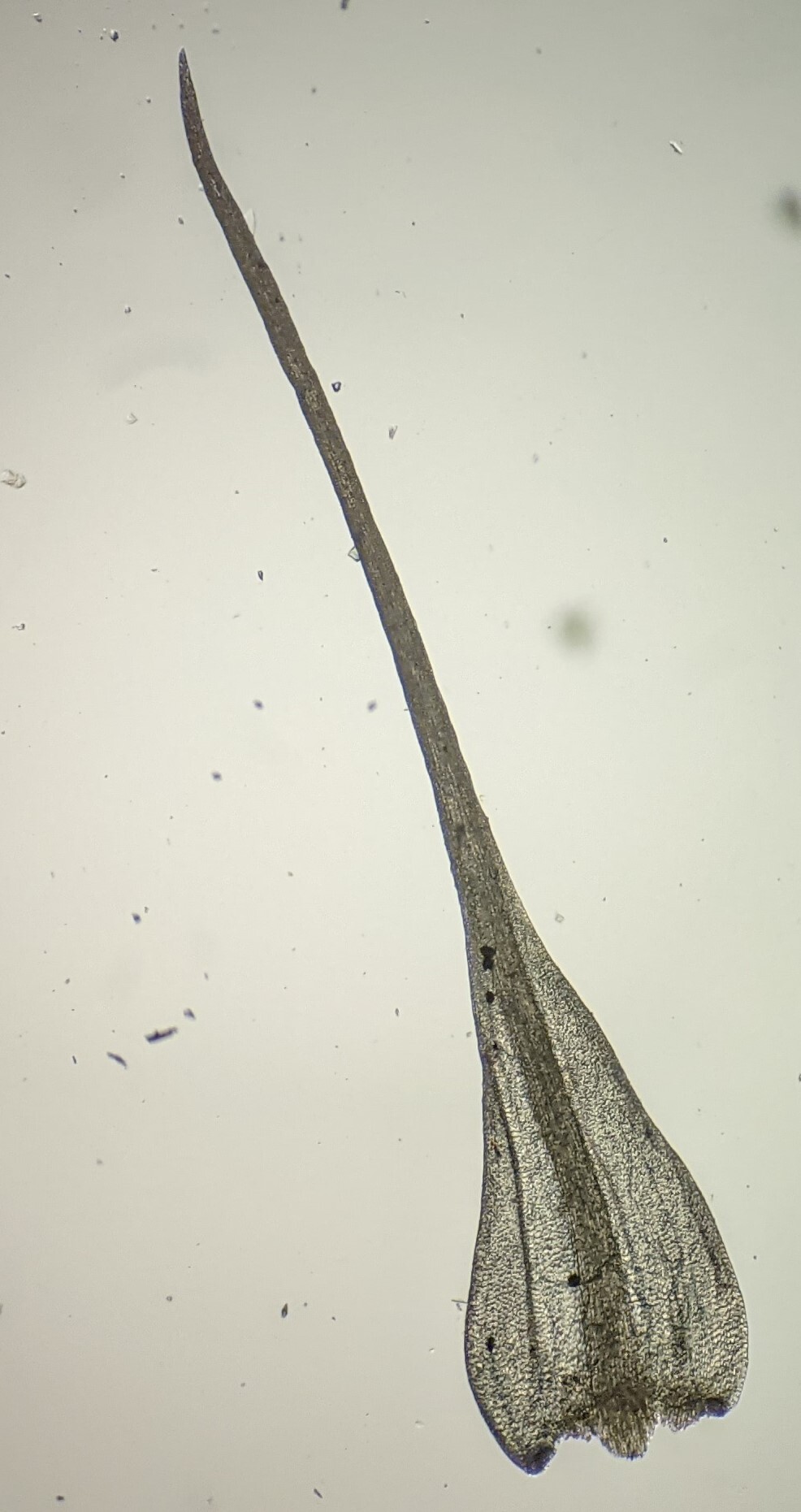Echinodiopsis hispida
(Hook.f. & Wilson) S.Olsson, Enroth & D.QuandtDioicous. Tufts or mats on soil, rock, roots, tree trunks or rarely logs, sometimes submerged. Secondary stems 3–10 cm long, sparingly and irregularly pinnately branched, often with flagellate branches bearing smaller leaves. Leaves erect-spreading when moist, erect and somewhat falcate when dry, subulate from ovate or lanceolate base, (2.22–) 2.36–3.4 (–6)mm long, 0.46–1 mm wide, concave, slightly plicate at base; apices long-subulate; costa excurrent as a rigid arista; margins entire or serrate toward apex, often recurved on one side near base, partly bistratose or bistratose throughout; laminal cells oblong, elliptic or quadrate, 4–15 μm long, 4–10 μm wide, becoming rectangular or linear at insertion and to 24 μm long, smooth, bistratose along plications and partially or entirely toward apex, often multistratose near costa at base; alar cells not differentiated. Seta 10–25 mm long, red to reddish-orange, smooth. Capsule inclined to pendent, ellipsoid, ovoid or subglobose, 1.2–2 mm long. Operculum oblique-rostrate from conic base, 0.5–0.8 mm long.
OtP, CVU, HSF, OtR, Strz. Growing beside or in fast flowing streams and waterfalls in the Otways, Yarra Ranges, Strzelecki Ranges and Bryce Gorge. Also Qld, NSW and Tas. New Zealand, New Caledonia and Auckland and Campbell Islands.
 Spinning
Spinning